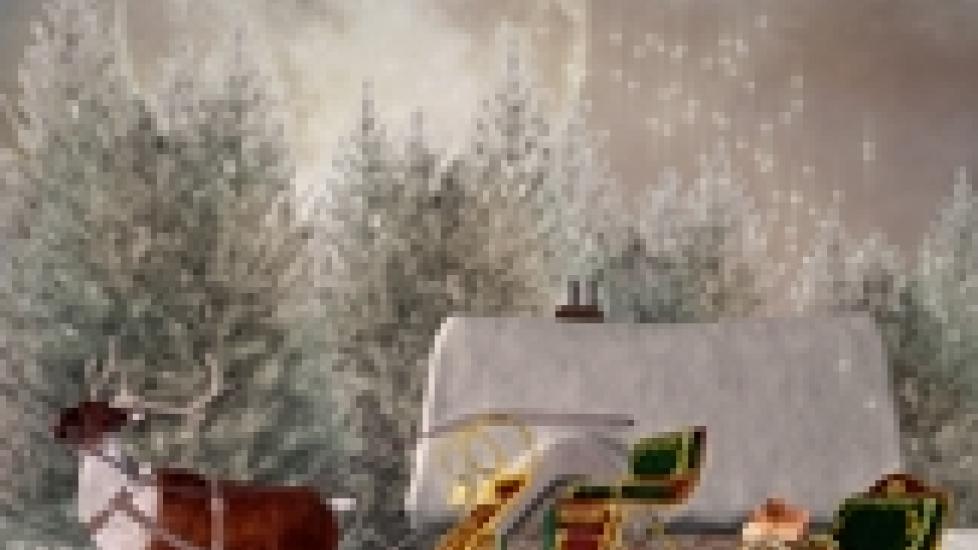Reindeer 101: Reindeer Facts and How Santa Takes Care of His Reindeer
As folks are rushing around finishing last minute details for holiday parties and gifts, I can only imagine the chaos that must be occurring up at the North Pole. With lists to check twice, stockings to fill, and chimney considerations, Santa Claus must have his hands full. And yet with all the details that global high-speed travel must entail, I’m positive that the jolly old fat man has not neglected perhaps the most important aspect of his annual commute: the health of his reindeer.
Santa was obviously onto something when he picked these cervids as his traveling companions. Very strong and extremely hardy in the worst of arctic conditions, reindeer can be trained to pull and are said to be relatively docile when domesticated. Closely related to caribou but not as large, reindeer are different from deer in that both males and females of the species grow antlers (only male deer grow antlers). Like cattle, reindeer are ruminants, meaning their digestive system is made of four stomachs, including a large rumen that contains millions of microbes that help digest the moss, lichen, and grass that they eat.
Like many other arctic animals, a reindeer’s outer coat is made of hair that is hollow. This helps maintain a warm, insulating layer of air between the reindeer’s body and the environmental temperatures, which frequently dip well below freezing. This is convenient for the likes of Santa, who then doesn’t have to worry about putting coats on his herd.
Recommended Pet Products
- Nutramax Proviable Probiotics & Prebiotics Digestive Health Supplement for Dogs & Cats, 160 count$89.98Chewy Price
- Fera Pets USDA Organic Pumpkin Plus Fiber Support for Dogs & Cats, 90 servings$34.95Chewy Price
- All Four Paws Comfy Cone E-Collar for Dogs & Cats, Black, Small$20.24Chewy Price
- Virbac Epi-Otic Advanced Ear Cleaner for Dogs & Cats, 4-fl oz bottle$12.34Chewy Price
Having cloven hooves like cattle, reindeer don’t need shoes on their feet; they are actually fairly sure-footed in snowy terrain. Like many other ruminants, they are relatively low-key to care for domestically as long as they are given enough roughage (grass or hay) to maintain body temperatures when the temperatures drop.
Disease-wise, a bacterium known to cattle, sheep, and goats called Brucella is a also a threat to reindeer, but as long as Santa keeps a closed herd, meaning no new additions and no exposure to outside reindeer, infectious disease shouldn’t be much of a worry. Technically speaking, to cross state lines in the U.S., Santa’s reindeer should have negative tuberculosis tests and ideally be vaccinated against rabies, but I doubt anyone’s checking travel certificates at midnight on December 25.
Although everyone is familiar with Rudolph’s unique capability, and some recent science explains an increase in capillaries in reindeer nasal tissue may be the key to a shiny red nose, reindeer have another pretty cool physiologic feature: their eyes. In 2011, the Journal of Experimental Biology published a study that examined how reindeer eyes detect certain wavelengths of light.
Living in the arctic, sunlight is both a blessing and a curse. Required in order to provide warmth and help animals find food, sunshine in polar climates is also dangerous. Sunrays reflect off snow, leading to a condition that early human arctic and Antarctic explorers suffered from called snow blindness. Additionally, at polar latitudes, the earth’s tilt results in increased amounts of UV rays entering the atmosphere. Damaging to human eyes, researchers found that reindeers can see UV light; their eyes are designed to let these wavelengths enter their optic nerves. Instead of damaging ocular tissues, this unique feature of reindeer eyes also allows them to see objects that absorb UV light and thus appear black on a snow-filled landscape. This includes urine, which would allow for observation of recent predators in the area, as well as lichen, an important source of food for arctic ruminants that is often covered by snow.
Although it’s likely Santa’s reindeer have no need to worry about scavenging for food or looking out for predators (I’m sure he’s got a top of the line barn built just for them, with heated water buckets and all the hay they could ever want), he still probably calls upon a vet once in a while for routine health checks and the occasional emergency. This year, along with my gift list, I mailed him my business card. Just in case.
Dr. Anna O'Brien
Image: Ellerslie / Shutterstock




